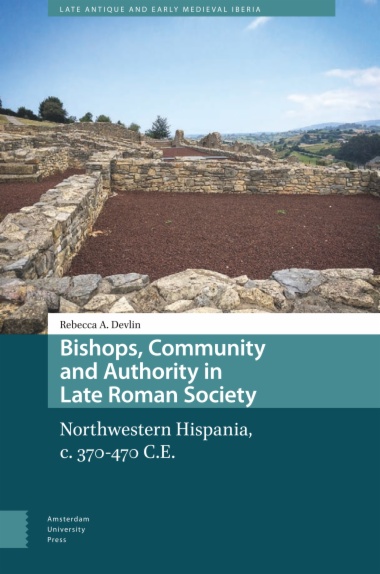When the bishop Hydatius found himself held hostage in Gallaecia, a Roman province in the northwestern Iberian Peninsula, by a band of Sueves in the year 460, he deployed his experience as an ambassador for his congregation and used his captivity as a tool for negotiating peace. As this example shows, bishops held considerable economic, political, and social power in the early Middle Ages. The expansion of ecclesiastical influence was not, however, a simple consequence of the legalization of Christianity or a power vacuum that followed the withdrawal of imperial authority. The transformation of the episcopate resulted instead from dynamic processes to which all status groups contributed and that are best understood through contextual and diachronic analysis. This monograph focuses on the clerical community in Gallaecia and employs a case study and interdisciplinary approach, incorporating written and material evidence, to put bishops like Hydatius in their larger social and economic contexts to elucidate why the people living and working in their sees would imbue them with increasing authority and explain how their roles within their local communities expanded.
- Cover
- Table of Contents
- List of Abbreviations and Preliminary Notes
- Acknowledgements
- 1 Introduction: The Clerical Communities of Late Roman Gallaecia
- Part 1 The Late Fourth Century
- 2 Symphosius and his Community
- Asturicensis in the Late Fourth Century
- 3 Exuperantius, Ortigius, and the Clerical Community of Lucensis in the Late Fourth Century
- 4 Paternus and his Community
- Braga in the Late Fourth Century
- Part 2 The Fifth Century
- 5 Travel, Trade and Theological Debates
- Orosius and the Clerical and Lay Christian Community of Braga
- 6 Hydatius and the Clerical Community of Gallaecia
- Conflict, Chaos, and the Culmination of Episcopal Authority in Society
- 7 Conclusion
- From Symphosius of Astorga to Hydatius of Aquae Flaviae and Beyond
- Appendix
- Bibliography
- Index
- List of Figures
- Figure 1.1 Map of the provinces of Hispania, ca. 400
- Figure 1.2 Map showing main locations and geographic features of late Roman Hispania mentioned in the text with area of study
- Figure 2.1 Map of Gallaecia showing conventus, ca. 293
- Figure 2.2 Map of Asturicensis, showing cities, settlements, sites and roads mentioned in the chapter
- Figure 2.3 Modern rural landscape near Astorga, León, and the villas at Navatejera and La Olmeda
- Figure 2.4 Villa at Olmeda showing corridor around peristyle with mosaic pavement and rooms (right) and one of the apsed rooms off of it with hypocaust for heating the floor (left)
- Figure 2.5 Villa at Olmeda showing an apsed hall (top) and mosaic pavements (bottom)
- Figure 2.6 Villa Veranes showing the monumental balneum that was added in the late third or early fourth century
- Figure 2.7 Villa Veranes showing view of surrounding landscape from the perspective of a room located next to the new gallery
- Figure 2.8 Villa Veranes showing the triclinium (bottom left) and use of the slope of the hill for the rectangular corridor (right) leading to the staircase and new audience hall built in the later fourth century
- Figure 3.1 Map of Lucensis, showing cities, settlements, sites and roads mentioned in the chapter
- Figure 3.2 Remains of the villa at Toralla with the service area (foreground) and the pars urbana, including the oecus, entrance and reception area, triclinium and northern corridor
- Figure 4.1 Map showing Braga, Aquae Flaviae, and sites, settlements, rivers, and roads mentioned in the text
- Figure 5.1 View from Suevic settlement at Falperra near Braga
- Figure 6.1 Fifth-century domestic and artisanal space in Braga’s Roman theater
- Figure 6.2 Fifth-century kiln in the façade of Braga’s Roman theater
- Figure 6.3 Fifth-century domestic and artisanal space in Braga’s Roman theater
- Figure 6.4 Fifth-century domestic and artisanal space in Braga’s Roman theater

